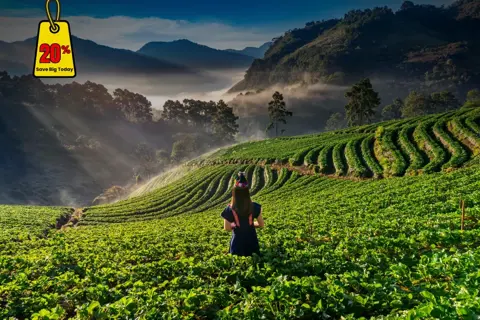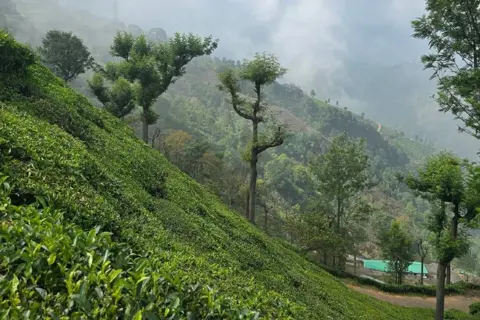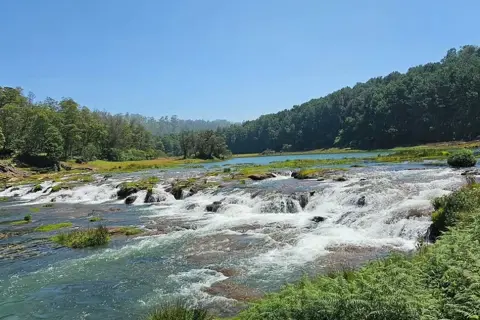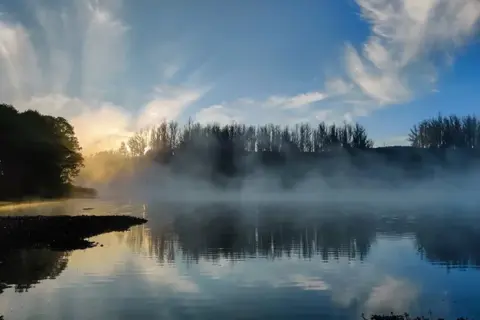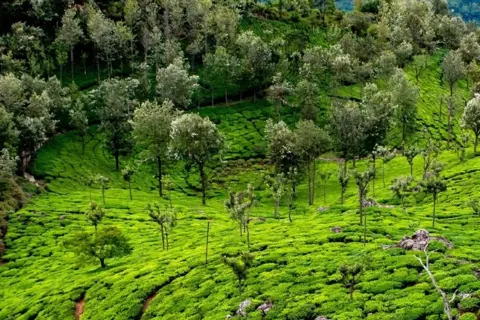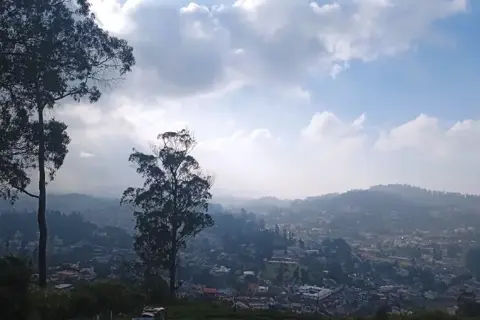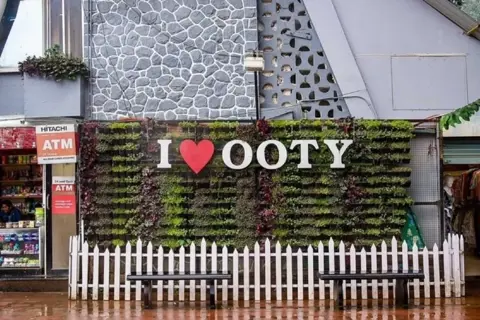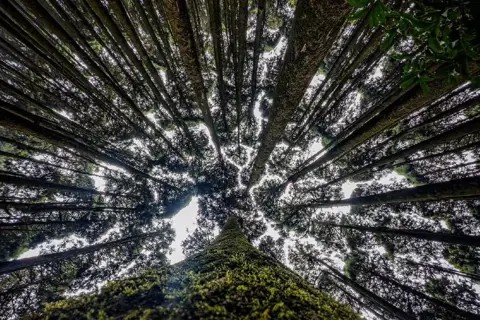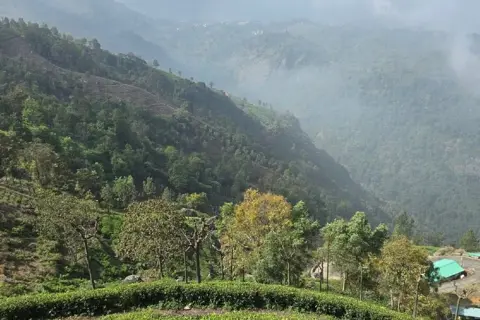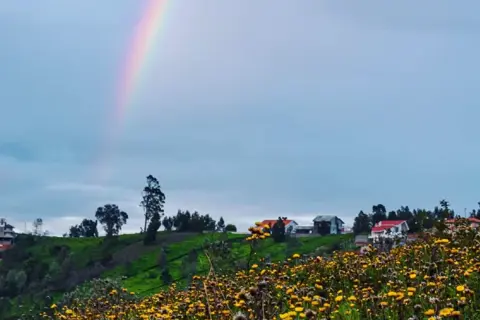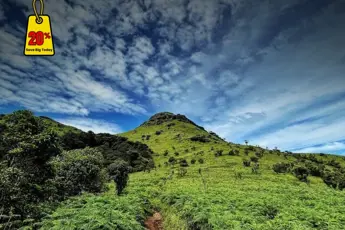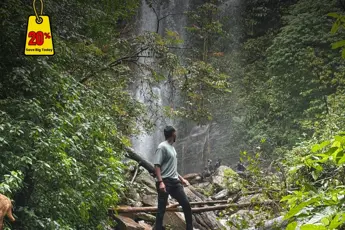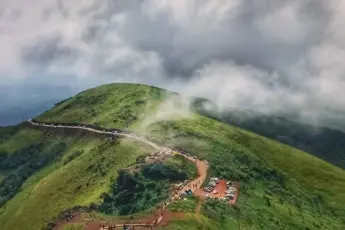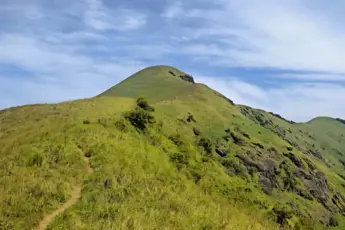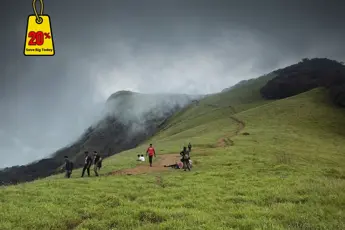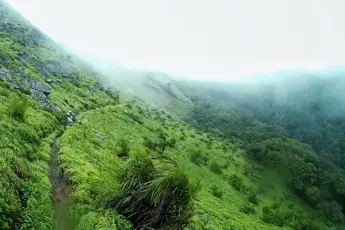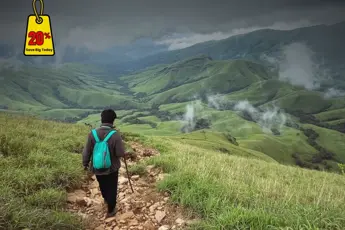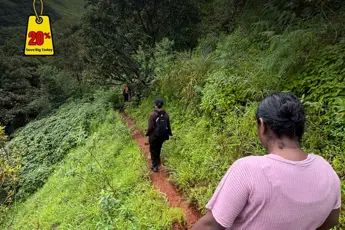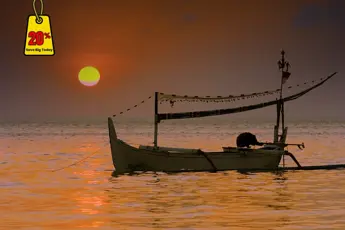Udhagamandalam, or Ooty, is most commonly known as the Nilgiri Hills, Tamil Nadu: a hill station located in the Nilgiri Hills that is regarded as one of the top hill stations in the South of India. Known as the "Queen of Hill Stations," Ooty is loved for its greener and more lively sceneries, moderate weather, rolling tea plantations, and the charm of the colonial era. Situated at an altitude of about 2,240 meters (7,350 feet), it is a very beautiful and refreshing getaway from the summer heat of the plains and has been the first preference for tourists, honeymooners, and nature lovers for a very long time. The beginning of the 19th century is the time and the place when Ooty was set up by the British as their summer abode, and this is the history of Ooty. Much of the British era history can still be seen in the architectural styles of living quarters, churches, and government office buildings. Ooty is one of the things that the Nilgiri Mountain Railway, a UNESCO World Heritage Site, has held onto from the past, which is a very picturesque ride through the snow-capped mountains, tunnels, and tea gardens. It is counted as one of the most scenic train rides in India that goes along this vintage railway line that connects Ooty and Mettupalayam. The greenery and the splendour of Ooty have been the primary factors that have drawn a large number of people from different parts of the world to visit it. Very beautiful, thick forests, lovely lakes, and beautiful gardens surround the town. The Ooty Botanical Garden is where a variety of both native and exotic plants have been grown since 1847, along with a fossilised tree that is believed to be 20 million years old. Ooty Lake is another popular area; it is an artificial lake where people can have boat rides and enjoy the magnificent views of the hills that surround the lake. Those who want to see everything can not only see the breathtaking view of the valleys from Doddabetta Peak, which is the highest point in the Nilgiris, but also have a clear view of the sky. Looking at the facts, in Ooty, together with the Botanical Garden, a visit to Doddabetta must be made. Tea and Ooty are a perfect match that neither of them can exist without the other. The district is popular for the widely spaced tea gardens that produce some of the finest teas in India. Nevertheless, the Ooty trip is definitely not complete without a visit to the tea gardens first, where you can not only witness the entire process of tea making but also taste some of the freshly brewed teas. The shops of the locals who display a variety of homemade chocolates, which are one of the most popular hill station souvenirs, have been very successful in the production of chocolates without a doubt.Places to visit in OotyOoty Botanical Garden: The Government Botanical Garden, located in Ooty, is one of the most well-known places to visit here and was established in 1847. The Garden is home to a wide collection of rare and common plants and is spread over 55 acres. Some of these include ferns, orchids, and a fossil tree that is estimated to be more than 20 million years old. The garden in a terraced style, the blooming flowers throughout the year, along with the annual flower exhibition, have made it so charming that it is hard for people interested in nature and photographers to ignore it.Ooty Lake: Ooty Lake was constructed in 1824 by John Sullivan and is an artificial lake surrounded by tall and close-set eucalyptus trees. Tourists can have fun with the boats available for use, pedal boats, row boats, and motorboats or just walk along the lovely paths. The little kids’ park, ponies for rent, and snack stalls close by make it a place for the whole family to enjoy.Doddabetta Peak: Doddabetta Peak, at 2,637 meters above sea level, is the highest point of the Nilgiri Mountains. It is a breathtaking place to have a look at the valleys, tea estates, and forests all around. At the top, there is a telescope house that enables visitors to have a closer view of the scenic landscape; as a result, the place is very much loved by nature lovers and photographers.Rose Garden: The Ooty Rose Garden is famous for being the largest rose garden in India. Over 20,000 rose varieties are grown in this garden of 10 acres, and terraced lawns filled with colourful and aromatic roses have been designed. It is a lovely place for couples, families, and anyone who cannot resist the charm of flowers.Nilgiri Mountain Railway: Nilgiri Mountain Railway, a site on the UNESCO World Heritage List, is a breathtaking trip through tunnels, bridges, and beautiful scenery where the train connects Ooty to Mettupalayam. This spectacular ride was built in 1908 and is one of the most attractive things to do in Ooty. It gives its visitors a fleeting glimpse of the area’s colonial past alongside its natural grandeur.Pykara Lake and Falls: Pykara is famous for its stunning lake, waterfalls, and green surroundings and is located about 20 km from Ooty. Pykara Lake is ideal for boating, while Pykara Falls is a double waterfall that falls between the trees silently. It is located in the centre of a Nsing picnic and is a quaint break from the busy town centre.Emerald and Avalanche Lakes: The two lakes are a bit off the path and are the best place for those who seek peace and the beauty of nature. Being surrounded by hills, tea gardens, and forests, the two lakes provide visitors the activities like birdwatching, trout fishing, and camping. They show the pure beauty of Ooty that is still committed to eco-tourism.St. Stephen’s Church: The St. Stephen's Church, which is one of the very first churches in the Nilgiris and a remarkable example of colonial-era architecture, was built in 1829. Its wooden interiors, stained-glass windows, and the quiet atmosphere that is experienced when coming here, take the visitors away in time, hence, a historical as well as a spiritual beacon in Ooty.Tea Museum and Factory: Ooty has been associated with tea, and the Tea Museum is an excellent place for people to learn the tea story, its growing, and processing. Visitors are able to see the tea-making process, taste different teas made well, and purchase authentic Nilgiri tea as gifts. It is strongly advised that tea lovers and cultural enthusiasts should visit this museum.Best Time to Visit OotySummer (March to June): The summer is one of the most popular and most crowded seasons of Ooty, when the climate is very pleasant, the degree of temperature ranges from 15 to 25. Summer is the time when all the activities, such as sightseeing, boating on the lake, and walking through the botanical or rose garden, are at their peak. Additionally, it is also the time when the famous Ooty Summer Festival is being observed, which is a nice festival, melodious with different kinds of events like flower shows, fruit exhibitions, and cultural programs that attract people from various parts of the country.Monsoon (July to September): While Ooty gets very heavy rains during the monsoon, the showers turn the whole hill station into a green paradise. Waterfalls like Pykara and Catherine are very impressive during the rainy season as the water is flowing very rapidly. Even though there are no outdoor activities because of the rain, the monsoon is the ideal time for those who love solitude, foggy views, and low hotel prices. It is a sad and peaceful season, but it is the best one for those who agree with getting wet once in a while.Winter (October to February): Ooty winter weather can drop to 5 degrees, and December and January are the coldest months of the year. Winter in Ooty is very suitable for those who like the mountains and do activities such as trekking, camping, and taking a tour of the tea plantations in the fresh mountain air. Winter days in Oots are foggy and cold downstairs, which makes it a clear winter destination. At the same time, it is the best moment for honeymooners, as the atmosphere brings a lovely and romantic touch to the hill station. But it is very necessary to wear warm clothes when going on a trip at that time.How to Reach OotyBy Airport: Coimbatore International Airport is the closest airport to Ooty, about 88 km. It is available in large cities like Bangalore, Chennai, Hyderabad, and Mumbai. Directly, people who can take taxis from the airport or go by bus can reach Ooty in about 3 hours; thus, it is very easy. It is also possible to take the airport of the Kempegowda International in Bangalore, which is about 273 km away, and so the journey by car or train to Ooty will follow.By Train: The major railway station closest to Ooty is Mettupalayam, situated 40 km away. From there, tourists can take a taxi or Nilgiri Mountain Railway (Toy Train), which is a UNESCO World Heritage Site, the shortest fork that connects Ooty. The ride is 5 hours 5-hour journey and during the whole short cut you pass through a tunnel, up and down along the bridges, beside waterfalls and green tea hills - this amazing journey is the highlight of the Ooty experience.By Road: The road connections between Ooty and the South Indian cities like Bangalore (273 km), Mysore (125 km), and Coimbatore (88 km) are very good. There are regular buses of the government and the private sector, including luxury coaches, that run from these cities. Moreover, if you are a fan of driving, you will have the opportunity to witness Mother Nature at its best through the beautiful journey by car to Ooty. The most stunning routes are either through Bandipur National Park or the 36 hairpin bend road from Mettupalayam.Why Book with escape2exploreWhen exploring Ooty and beyond, escape2explore stands out as a trusted name in adventure and experiential travel. Here’s why hundreds of travellers choose us for their getaways:Trusted, Well-Reviewed Local Operator: escape2explore has gained the trust of thousands of content tourists all over India. With persistent positive feedback and an unblemished reputation for delivering quality experiences, we assure you that your experience will be hassle-free, memorable, and value-packed. Our insider local knowledge guarantees that you will always be in safe hands.Seasoned Guides: Our trips are led by friendly, trained, and professional guides who are passionate about the outdoors and your safety. Whether it's a beach trek, a cultural tour, or a spiritual walk through temples, our team knows the terrain, the stories, and how to make each moment count.Safe & Curated Itineraries: Your safety is our number one priority. Our tour packages are thoughtfully crafted with safety measures, researched accommodations, and easy travel arrangements. We take care of the details so you can have the experience hassle-free and worry-free.Unique Experience That You Won't Find Anywhere Else: With escape2explore, you discover more than the tourist attractions. We go off the beaten track with hidden beaches, unusual treks, offbeat cultural destinations, and true interactions.







